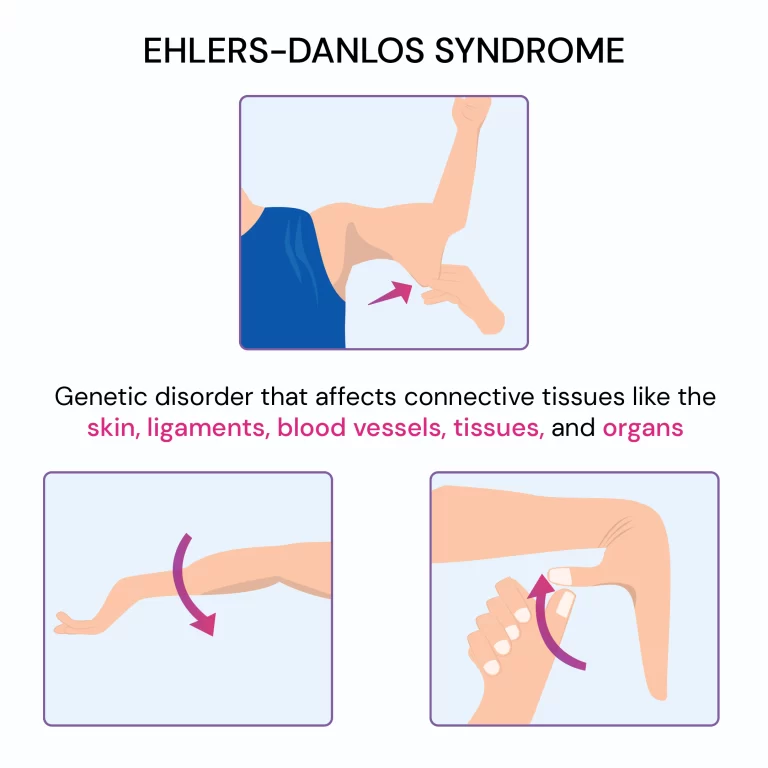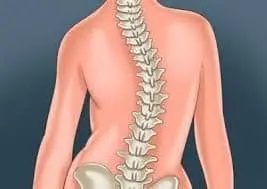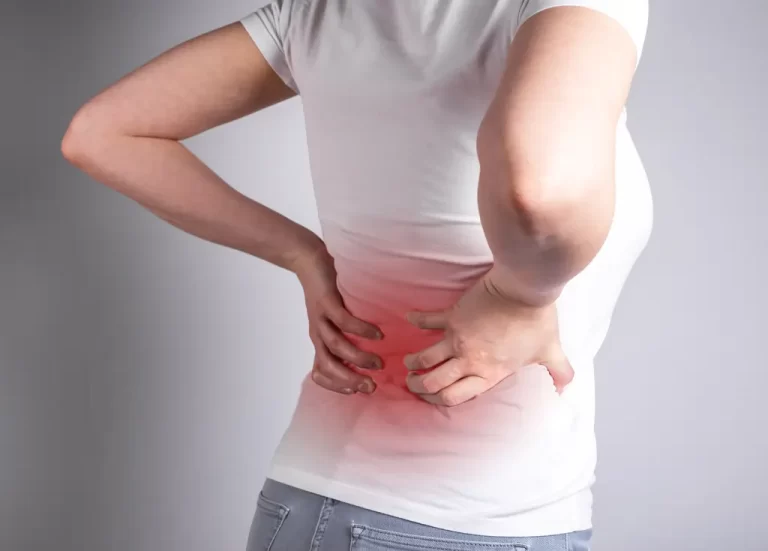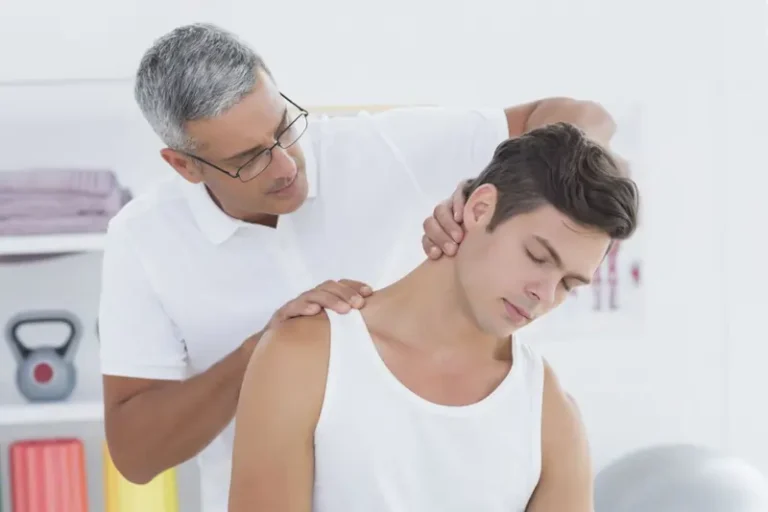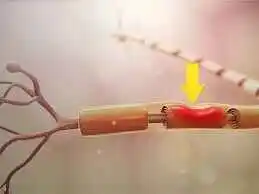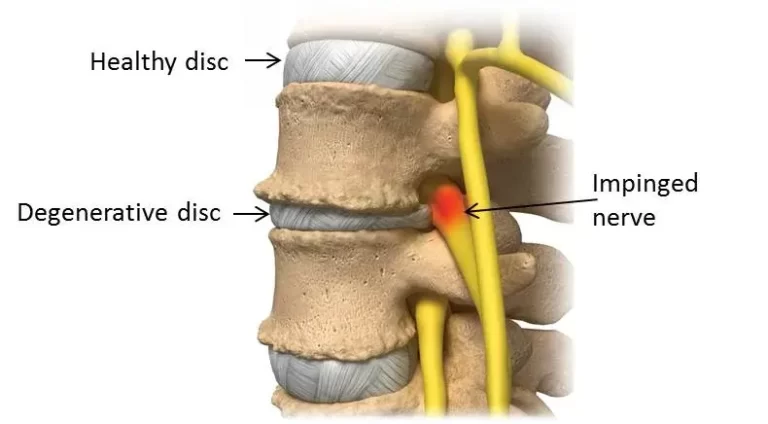Retrocalcaneal Bursitis
What is Retrocalcaneal Bursitis?
- Retrocalcaneal bursitis, a condition that causes severe pain, is caused by the bursa a sac-like structure that reduces friction between surfaces filling up with inflammatory fluid. Here, two bursas are located. Pain in the back of the heel and ankle may result from inflammation of either of these bursa.
- Moreover, there is a noticeable strain on the tendon insertion on the dorsiflexion-affected posterior portion of the tendon.
Relevant Clinical Anatomy & Pathogenesis
The bursae and the bone at the point of Achilles tendon insertion are conceptually so closely related that even a slight protrusion of the calcaneum will significantly raise the risk of mechanical bursa irritation.
Epidemiology of Retrocalcaneal bursitis.
It is more common in the general population in those who are used to wearing high-heeled shoes for extended periods of time. The Achilles tendon and associated bursae may become more strained and inflamed when switching to flat shoes.
Causes of Retrocalcaneal bursitis
- Retrocalcaneal bursitis may develop traumatically from falls or impact contusions sustained during sports, or it can develop gradually as a result of bursa repeated trauma from activities like running or heavy lifting.
- Pressure, such as that experienced by athletes wearing tight-fitting shoes, can exacerbate the problem.
- Bursa impingement between the Achilles tendon and an abnormally protruding posterosuperior portion of the calcaneus (Haglund deformity) can occasionally result in retrocalcaneal bursitis.
- Retrocalcaneal bursitis can develop gradually as a result of repetitive bursa stress, such as that caused by jogging or overexertion, or it can occur traumatically from a fall or sports-related contusion.
- An overachievers sportsperson
- shoes that are extremely tight or ill-fitting and strain the heel excessively.
- Haglund’s abnormality
- pivot shaft changed
- tense muscles
- older than 65
- arthritic
- Work involving a lot of repetition and/or joint strain
- Taking part in sports
Signs and Symptoms of Retrocalcaneal bursitis
- pain in the back of the heel, particularly when sprinting uphill
- Standing on tiptoes or rising on your toes may make your pain worse.
- Inflammation behind the heel
- Increased pain during calf-loading activities.
- The heel is compressed as you stand on your tiptoes, which can sometimes make the pain worse.
- It could feel sensitive to the touch where the heel pain is located.
- warmth and redness
- skin enlargement on the back or sore spot on the heel
- pain in the back of the heel, particularly when sprinting up a hill
- Pain intensifies when engaging in activities that put pressure on the calf muscle and produce a cracking sound or sensation when you bend your foot.
- Putting on shoes could be difficult.
Differential Diagnosis
- posterior impingement of the ankle
- Haglund abnormality
- Achilles tendon tendinitis
- Achilles tendon rupture
- Plantar fascistis
Diagnosis
Physical Examination:
- An anatomical propensity to retrocalcaneal bursitis can be exacerbated by biomechanical irregularities, joint stiffness, and proximal soft tissue tightening; when these conditions exist, they should be corrected.
- The posteroinferior corner of the Eager fat pad sometimes referred to as the bursa wedge or retrocalcaneal recess, is where people with retrocalcaneal bursitis may lack the typical radiolucency or blunting. This could happen with or without a calcaneus erosion in tandem.
- Though such testing is usually not required, theoretically, MRI might assist the doctor in determining if the inflammation is within the tendon itself, the subcutaneous bursa, or even the subtendinous bursa.
- Ultrasonography is a potentially helpful diagnostic technique for Achilles tendon disease.
Treatment of Retrocalcaneal bursitis
Medical Management
Medication, mainly in the form of oral non-steroidal anti-inflammatory drugs, or NSA-IDs for short, can be used to treat the pain and other symptoms of retrocalcific bursitis. These medications are most likely well-known to you as prescription painkillers like ibuprofen and naproxen.
The medicine is used in conjunction with a rehabilitation program to treat the symptoms of retrocalcaneal bursitis. Topical anti-inflammatory drugs, like diclofenac cream or ointment, are occasionally prescribed to treat localized heel pain.
Physical therapy Management
- TENS shuts down the spinal cord’s anterior grey horn gate mechanism. further activates the body’s natural opioid system, which stops substance P from releasing at the anterior grey horn.
- IFC: Interference current therapy generates a low-frequency action at the targeted tissue, increases blood flow, decreases edema, stimulates the endogenous opioid system, and blocks the transmission of pain signals. It also eliminates waste products.
- A limb or the full body can be immersed in hot (not boiling) water for a short while before being immediately submerged in cold ice water as part of a treatment called contrast bath therapy. This process is carried out repeatedly, switching between heat and cold.
Best Exercise for Retrocalcaneal Bursitis
- Foot & Ankle Up & Down
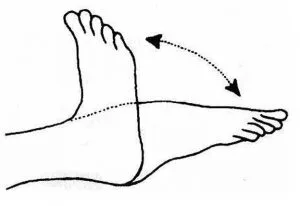
This is a rather simple and fundamental workout for the illness. begin in the lying supine position. You can perform the exercises in a pain-free range, which means that you should only worry about a mild to moderate stretch, nothing more.
Do three sets of 40–50 repetitions per session each day. This workout has the advantage of improving blood circulation.
- Foot & Ankle In & Out
begin in the supine posture, then Stepping your foot and ankle inside is referred to as inversion, and moving them out as far as you can is referred to as eversion without pain, or the pain-free range, as long as you can tolerate a mild to moderate stretch, but no more. Do three sets of 40–50 repetitions per session each day.
- Foot and Ankle Circles
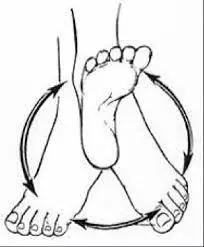
You may perform this workout passively or actively. begin in the lying supine position. As long as you take care of the mild to moderate stretch sensation. Do three sets of 40–50 repetitions per session each day.
- Achilles tendon stretching
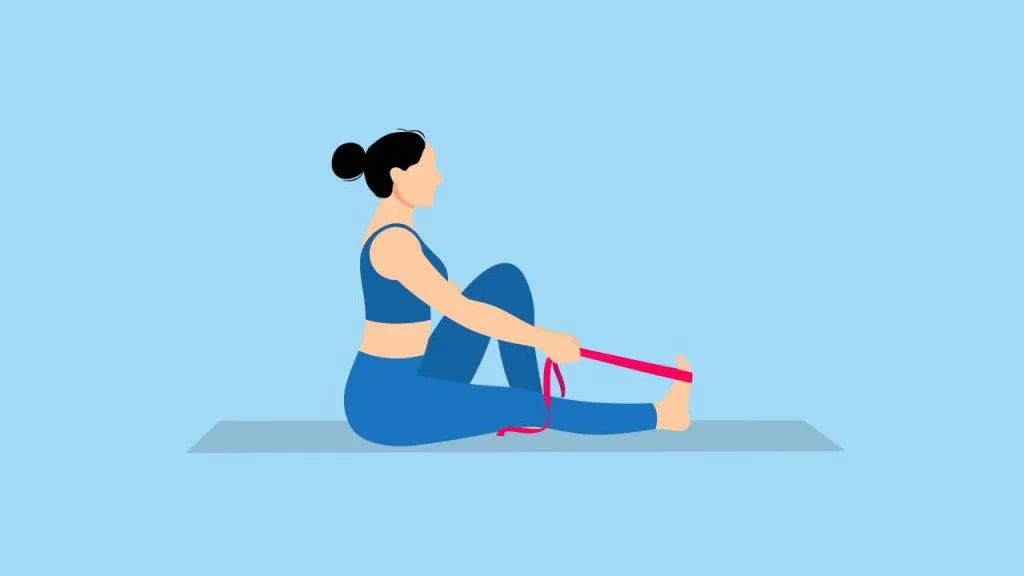
Stretching your bursa-tightening muscles may help to reduce your symptoms (pain).
This can be accomplished by straightening your leg, putting the front of your foot on the step’s edge, and gradually lowering your heel while tensing your muscles.
Stretch three times a session, perform three sets a day, and, most importantly, hold the pose for thirty to sixty seconds in between each exercise.
- Standing heel raise

Place yourself in a standing position on the ground, a little elevated surface, or a set of stairs, and evenly distribute your weight between your toes. After a brief period spent holding the “peak” position with your toes elevated gently, return to the ground. Since the goal of the workout is controlled movement, raise and lower oneself gradually.
- Calf stretching
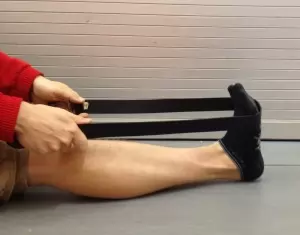
Stretching the Achilles tendon helps alleviate strain on the sensitive regions of the ankle around Haglund’s tubercle.
- This process can be done five or six times a day. It is important to perform this stretch three times per workout, three sets per day, and to hold the position for thirty to sixty seconds in between sets.
- Orthotics (Heel cushion)
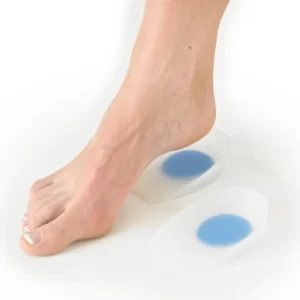
Improved blood circulation, less joint stress, increased stability, and additional cushioning are the major goals of this orthosis. Retrocalcaneal bursitis symptoms can be lessened with the use of heel padding in shoes.
Wearing heel wedges in your shoes can help if you have tight calf muscles and an Achilles tendon as a result of heel bursitis. This is a simple gel or felt wedge that slightly lifts your heel to relieve stress on the Achilles tendon.
After doing regular stretching exercises for a few weeks, the heel wedge is usually no longer needed. Heel protectors are necessary for both shoes to prevent leg length discrepancies, which can cause knee and back pain. This orthosis is readily available at the hospital; if it is not, you can obtain one by contacting the orthosis department. They measured you and created the ideal orthosis.
- Seated plantar fascia stretch
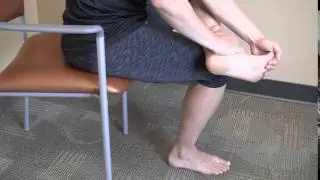
A simple stretch of the planter fascia is referred to as the plantar fascia. To assist the muscles relax, it can help improve range of motion and lessen both acute and chronic heel pain.
To begin, you should sit on a chair or plinth with both legs dangling off of it. Next, you should cross one leg over the other, release your ankle joint from your opposing knee, and place your heel free or in the air. It takes stabilization to achieve this stretch. It is vital that you retain this position for thirty to sixty seconds.
- Resisted ankle eversion
You may strengthen the muscles that support your ankles and feet by performing ankle eversion exercises. This exercise is strengthening thus you need a resistance band or Theraband. Thera-bands come in a variety of colors, and the black color is particularly potent depending on your strength.
You may also create a loop with a resistance band and insert your foot through it.
You can either do it on your own or with the assistance of physical therapy and (all ankle movement).
- Plantar fascia massage
Massage of the planter fascia enhances flexibility and mobility, reduces pain, and increases circulation.
For stability, you should first stand up next to a wall or other surface, either supported or unsupported.
Your planter fascia will relax if you roll the object—a soft roller or golf ball—under your foot in a circular motion from your heel to your toes.
Roll for approximately one minute, pausing between each exercise for twenty seconds.
performed three sets a day, five to ten times a session.
- Toe curl exercise

The legs and toe muscles are strengthened by this activity. Your muscles will get stronger if you perform three sets of six to ten repetitions on each leg.
- Marble pickup exercise
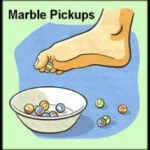
The muscles in the soles and toes are strengthened by this workout.
Other treatments for Retrocalcaneal Bursitis
- Taping
A heel taper may be suggested by your physical therapist as a treatment for retrocalcaneal bursitis. It lessens and stabilizes localized pain.
- Shoes and footwear
One of the most crucial aspects of treating retrocalcaneal bursitis is changing shoes. For a while, you should think about donning open-toed shoes, as this reduces strain on the heel. Retrocalcaneal bursitis is a condition that can occasionally happen when you abruptly go from wearing high heels to flat shoes, which are typically used by models. To alleviate pain temporarily, it could be a good idea to employ a medium interest.
Since the support and fit of athletic shoes might fluctuate due to use, athletes should buy appropriate and comfortable pairs on a frequent basis. Your physical therapist might advise placing an orthosis heel cushion underneath the inflamed heel to improve blood circulation, reduce joint tension, and add additional cushioning.
Ankle joint Range of motion exercise
- dorsiflexion
- plantar-flexion
- eversion
- inversion
- Tilt your body forward in the direction of the wall until you feel the bilateral Achilles tendon gently extending.
Stretch for another 20 to 60 seconds, then release the tension. Both with the knee extended and then flexed, perform the stretches. - Repeat the aforementioned procedures multiple times a day, for multiple stretches every set, to optimize the benefits of the stretching regimen. Stay away from ballistic (i.e., sudden, jerky) stretching.
Strengthening exercise:
- After holding for roughly six seconds, let go. After pushing your foot out to the side against the tubing, carefully return it to the center while counting to ten.
- foot. After holding for roughly six seconds, let go.
Weight-bearing exercise
- walk-on toe
- walk-on heel
- toe standing
- heel standing
Balance exercise:
- If you are feeling unstable, move to a doorway where you may support yourself with your hands on the door frame.
- as soon as you can perform this for sixty seconds. With your eyes open, cross your arms over your chest and stand solely on the damaged foot.
- as soon as you can perform this for sixty seconds. If you are feeling unstable, move to a doorway where you may support yourself with your hands on the door frame.
Close your eyes, cross your arms over your chest, and stand solely on the damaged foot.
proprioceptive training :
- Bosu proprioceptive training
- wobbling board proprioceptive training
- training
- proprioception on the balancing board
Exercises to avoid Retrocalcaneal Bursitis
- Plyometrics: One of the most painful activities for your heels and arches when recovering from heel spurs is plyometrics, which includes leaping exercises or activities. Plyometric training can also present the potential to injure the heel and strain the mucous, although the exercises’ brief energy bursts provide muscle control and strength in various jumps.
- Jogging or running: These two activities are frequently linked to heel pain. The impact is significantly higher when the leg is raised and strikes the ground with each stride than when walking.
- Slurpee: Although they may seem intense, burpees rank second in terms of exercise for spurs or heel pain. Plank, half-squats, push-ups, squats, and switch to plank are all part of a burpee workout. These exercises develop a network of joints in the leg since they call for a lot of fast movements. or impairment of the legs.
- Impact Sports: There’s a good chance that this strenuous activity will exacerbate heel pain. Both sports involve a lot of running, which can cause heel pain, as well as a lot of sudden changes in foot movement and significant plantar fascia tension, which can result in small tears and injuries.
- Cardio Dance and Aerobics: These two types of exercise can be enjoyable. Although the majority of the leg is pressed during cardio, the force of the impact and quick footwork can also result in heel pain. Numerous leg movements and jumps are part of aerobic dance and aerobics, which can strain, irritate, and inflame the fascia.
Factors to the development of retrocalcaneal bursitis
Numerous variables may put a patient at risk for this illness. These could include the following and should be evaluated and treated under a physical therapist’s supervision:
- inadequate foot biomechanics, especially for flat feet
- Unsuitable footwear, such as shoes that are too tight
- weakness in the muscles (the calves, quadriceps, and glutenous, which are linked to the calcaneus bone)
- tenseness in the muscles, especially the calves
- stiffness in the ankle’s subtalar joint
- abnormalities in the bone of the heel
- unsuitable or overindulgent exercise or engagement
- poor recovery from a prior Achilles injury alteration in the surfaces or circumstances of training
- improper form when running
- insufficient health.
Precaution during Exercise
- Exercise should be started correctly, muscles should be stretched, holds should be given, and repetitions should be given at the appropriate intensity.
- When exercising, dress comfortably loosely to avoid orthoses and let your body move freely.
- Stretch the tense muscles that are causing you pain, but stretching shouldn’t ever cause you to experience intense or stabbing pain.
- Breathing should never be held throughout a workout. When you first begin an exercise routine, take a deep breath and release it gradually. Breathing heavily during activity causes your muscles to become more tense, which raises your blood pressure.
Conclusion:
Retrocalcaneal bursitis is treated with rest, physical therapy, and painkillers to lessen swelling and pain. Using ice, wearing appropriate footwear, avoiding activities that aggravate the condition, and using non-steroidal anti-inflammatory medicines (NSAIDs) are examples of conservative therapy that can often effectively reduce symptoms.
In cases that are more severe or persistent, patients may be treated with corticosteroid injections, orthotic devices, or, in extreme cases, surgery. A successful recovery and the avoidance of long-term consequences like chronic pain or impaired mobility depend heavily on early intervention and strict adherence to a rehabilitation program.
Retrocalcaneal bursitis may generally be managed well enough for most patients to resume their regular activities without experiencing serious long-term problems.
FAQs
Who provides treatment for retrocalcaneal bursitis?
Make an appointment with your orthopedic physician if the pain does not improve within a week or if it gets worse. If an orthopedic specialist or primary care physician suspects the patient has heel bursitis, they will conduct a thorough physical examination and may request an MRI, ultrasound, or x-ray.
What term does retrocalcaneal bursitis go by?
The ailment known as retrocalcaneal bursitis, which is also called ankle bursitis or Achilles tendon bursitis, is characterized by inflammation of the retrocalcaneal bursa, a tiny sac that acts as a cushion.
Can bursitis in the heel be massaged?
You might try the following at-home remedies in addition to medical therapies to relieve the symptoms of Retrocalcaneal Bursitis: To assist relieve inflammation, gently massage the affected area with your hands or a tennis ball. To ease pain and relax the muscles, apply warm compresses or take warm baths.
How is retrocalcaneal bursitis diagnosed?
How is a diagnosis of retrocalcaneal bursitis made? Your foot will be physically examined by your doctor to check for any indications of pain, edema, or redness. They’ll inquire about your shoe selection, exercise regimen, duration of standing, and history of retrocalcaneal bursitis.
Can bursitis recover by itself?
In most cases, bursitis resolves on its own. If these cautious steps prove ineffective, you may need Drugs.
What are some effective heel bursitis exercises?
Try to maintain solely your toes and the ball of your foot on the ground. After raising your heels, attempt to maintain the posture for a brief period of time before bringing them back down.
References
- Prajapati, D. (2023, July 6). 12 Best Execise for Retrocalcaneal Bursitis. Samarpan Physiotherapy Clinic. https://samarpanphysioclinic.com/12-best-execise-for-retrocalcaneal-bursitis/
- Physiotherapist, B. (2023, August 19). Retrocalcaneal bursitis: Causes, Symptoms & Treatment. Mobile Physiotherapy Clinic. https://mobilephysiotherapyclinic.in/retrocalcaneal-bursitis-and-physiotherapy-management/
- Retrocalcaneal Bursitis: Symptoms, Causes, and Treatment. (2024, August 5). Alleviate Pain Clinic. https://www.alleviatepainclinic.com/retrocalcaneal-bursitis/


